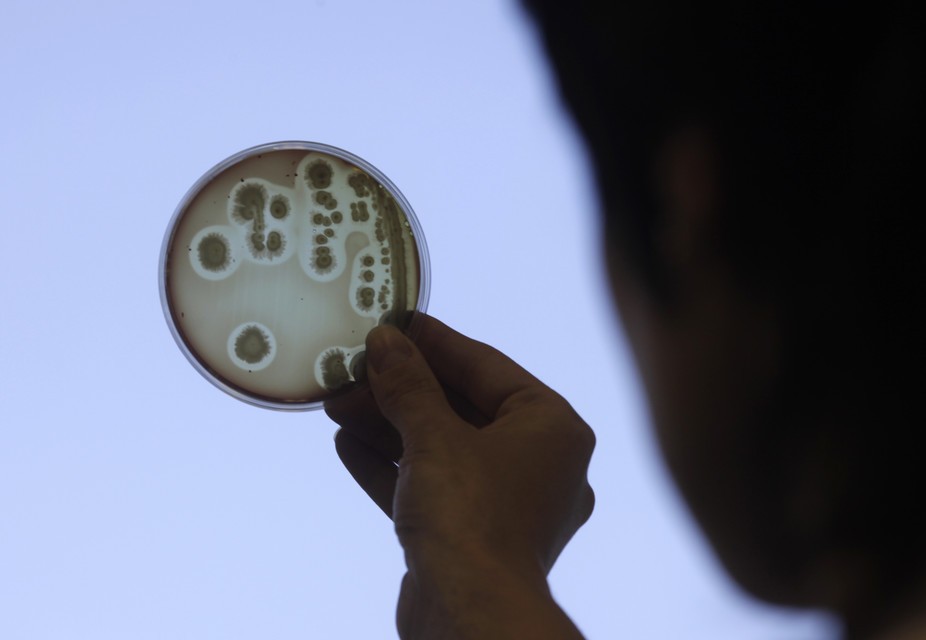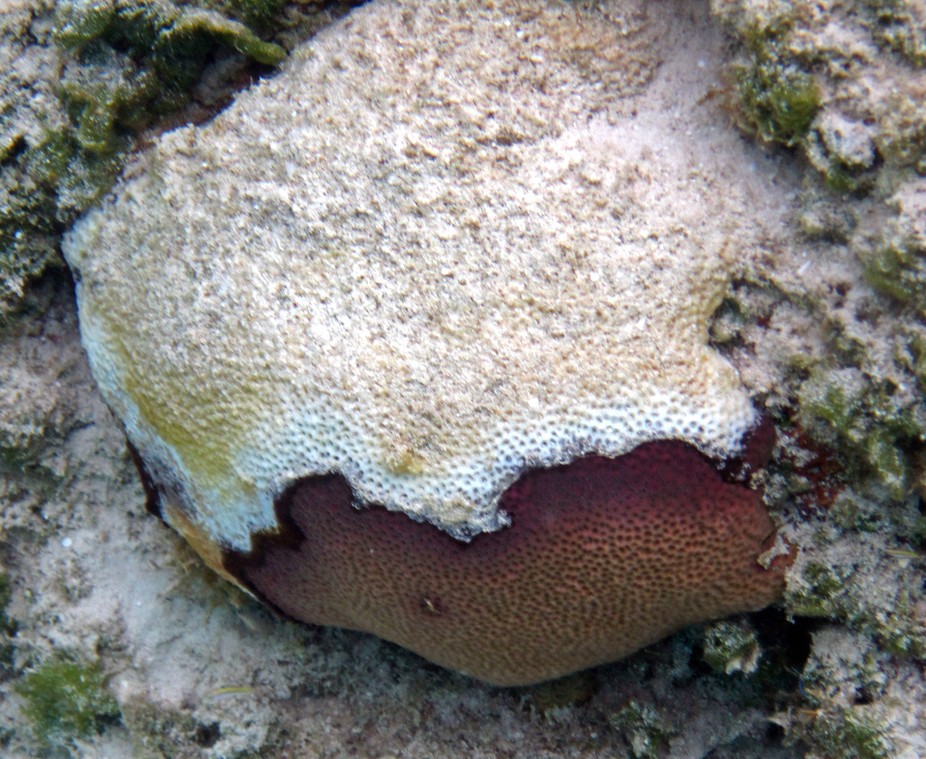Arinjay Banerjee, University of Saskatchewan; Jason Byron Perez, University of Saskatchewan, and Simona John von Freyend, Monash University
“Stop the spread of superbugs,” “15 superbugs and other scary diseases” and “Superbug bacteria found in tested hotel rooms” are headlines we often read or hear about. But what do we mean when we say “bugs”?
The term is used to describe viruses, bacteria and parasites. While they can all make us sick, they do it in different ways. So what is the difference between these pathogens, and how dangerous are they?
Let’s start with viruses, the smallest of the three.

Electron microscope image of rabies virus (Rabdoviridae).
Sanofi Pasteur/Flickr, CC BY-NC-ND
Viruses – from the common cold to Ebola
Viruses have been around for a really, really long time. They predate us and could even be our oldest ancestors.
Viruses have helped build genomes of all species, including humans. Our genome is made up of 50 percent retroelements – the DNA from retroviruses. And viruses might have paved the way for several DNA replication enzymes, which are essential for a cell to divide and grow.
Viruses are capable of causing infections in humans and animals – and some viruses can even jump from one to the other.
Viruses have two phases of life. Outside a cell, they are nonliving and are called virion particles. Once inside a cell they use the cellular machinery to their advantage to replicate and multiply. Some scientists may argue that viruses are alive when inside a cell.
Some viruses, like the common cold, can make us sick, but don’t do lasting harm. But others are known to cause lethal disease in humans and animals. A pandemic strain of influenza can severely infect a large number of people in a very short time. There were an estimated 201, 200 respiratory deaths with an additional 83,300 cardiovascular deaths globally during the 2009 influenza (H1N1) pandemic.
While we are exposed to virus particles every day, we don’t always fall sick because the immune system can handle most of them. We get sick when we encounter a new virus for the first time or in sufficient quantity. This is why it is recommended to get a flu shot every year. The circulating strain of influenza may vary each year, and immunity from a previous infection or vaccine might not protect us in the event of exposure to a different strain.
The ability to spread quickly and replicate rapidly makes some of these viruses dreaded entries on the list of pathogens, to an extent that some are even considered as potential weapons of mass destruction. There are also viruses that kill slowly over time. A classic example is the rabies virus. It has a long incubation period (1-3 months) and is vaccine-preventable, but once the symptoms set in, the individual is almost certain to die.
Vaccines are the best way to protect ourselves from viruses. Vaccines prime the immune response, allowing our bodies to respond to an actual infection more efficiently. Vaccines have reduced the disease burden for several otherwise lethal viruses such as measles, rubella, influenza and smallpox. Beyond that, washing hands and covering noses while sneezing are practices that can keep some of these viruses at bay.

Immunohistochemical detection of Helicobacter histopatholgy. KGH via Wikimedia Commons, CC BY-SA
Bacteria – toxin-producing invaders
Some bacteria are good for you, offering protection against pathogens and aiding with digestion in the gut. But some aren’t so beneficial or benign.
Some are specialized to cause disease such as Staphylococcal infection (Staphylococcus aureus), botulism (Clostridium botulinum), gonorrhea (Neisseria gonorrhoeae), gastric ulcer (Helicobacter pylori), diphtheria (Corynebacterium diptheriae) and bubonic plague (Yersinia pestis).
They can produce toxins, invade cells or the bloodstream, or compete with the host for shared nutrients – all of which can lead to illness. The right course of treatment can depend on how the bacteria is causing illness.
Take botulism, for instance. People get it when they eat food contaminated with toxins or bacterial spores from C. botulinum. If a person ingests the toxin, he or she can develop symptoms within six to 36 hours. If the spore is ingested, it can take up to a week.
Supportive care is the primary therapeutic method, to prevent or relieve other possible complications and to maintain the health and breathing of the patient. Antibiotics treat infections by destroying the bacterium, but with botulism, the destruction of the bacterium can lead to the release of more toxins, causing severe illness. Doctors treat toxins by administering antitoxins or inducing vomiting.
Today, thanks to the misuse and overuse of antibiotics, resistant bacteria is on the rise, and as of 2013, there were about 480,000 new cases of multidrug-resistant tuberculosis (MDR-TB).
Cycling between different antibiotics can reduce the risk of resistance. Alternatives, such as bacteriophages (bacteria killing viruses) or enzymes that destroy the genome of resistant bacteria, are being developed. In fact, bacteriophages are widely used in Eastern Europe but haven’t been approved in North America.
There are vaccines available for some bacteria, like the DPT vaccine against Diphtheria, Bordetella pertussis and Clostridium tetani. And there are plenty of simple solutions to prevent bacteria from making us sick, such as proper hand washing, disinfection of surfaces, use of clean water and cooking to appropriate temperatures to eliminate bacteria.

Leishmania mexicana parasites.
Wellcome Images, CC BY-NC-ND
Parasites – benefiting at our expense
The third group in our trio of pathogens – parasites – have inspired many horror stories and many of us find them kind of gross.
Parasites are a diverse group of organisms that live in or on a host (like us) and benefit at the host’s expense. Parasites can be microscopic single cellular organisms called protozoa, or bigger organisms like worms or ticks. Protozoan parasites are actually more closely related to the cells in our body than to bacteria.
Parasites are everywhere, and they can play a complex and important role in ecosystems.
But parasites can also cause horrendous diseases, especially in the developing world. In many cases, infection with parasites goes hand in hand with bad sanitary conditions and poverty. Even though much progress has been made, malaria, which kills one child every 30 seconds with 90 percent of the cases in Africa, is still the most deadly disease caused by parasites. But it is by far not the only one.
Other parasitic diseases common in many – mostly tropical – parts of the world are Leishmaniasis, River Blindness and Elephantiasis.
Many parasites are transmitted by mosquitoes and other insects, and with the effects of climate change intensifying, many parasitic diseases are likely to move farther north.
Parasitic diseases are on the rise in developed countries, including the U.S. Chagas disease, for example, is caused by a single cellular parasite and cases are increasing in North America, possibly aided by climate change.
There are no vaccines available so far against any major parasitic diseases in humans, but there is plenty of research on that front. Luckily, there are many drugs available to combat parasites.
For instance, the 2015 Nobel Prize in Medicine was given to scientists who developed antiparasitic drugs (one drug, Ivermectin, treats worms; the other, Artemisinin, treats malaria).
These two drugs have helped whole countries to manage scourges caused by parasitic worms and malaria.
The latest success was in September 2015, when Mexico eliminated River Blindness, which is caused by Onchocerca volvulus, with the help of ivermectin donated by Merck.
Stay clean
Getting a harmful virus, bacterial infection or parasite disease isn’t good news. Fortunately we have effective treatments for some of them, and vaccines that can prevent us from getting sick as well, even if some of these bugs can evade the best medicines we have.
And keep in mind that even if these bugs can make us very, very sick, you still need to be exposed to them to become infected. While bigger strategies, like sanitation and infection control can keep us and others safe, so can simple strategies, like washing our hands, staying home when we are sick and covering our mouths when we cough or sneeze.
![]() Arinjay Banerjee, PhD Student in Veterinary Microbiology, University of Saskatchewan; Jason Byron Perez, MSc Student, University of Saskatchewan, and Simona John von Freyend, Research Fellow, Malaria biochemistry, Monash University
Arinjay Banerjee, PhD Student in Veterinary Microbiology, University of Saskatchewan; Jason Byron Perez, MSc Student, University of Saskatchewan, and Simona John von Freyend, Research Fellow, Malaria biochemistry, Monash University
This article was originally published on The Conversation. Read the original article.
Featured Image Credit: Ints Kalnins/Reuters
Now, Check Out:
- Here’s a Bat Virus That Could Cause the Next Epidemic
- Explainer: Where did Zika virus come from and why is it a problem in Brazil?
- Amazing Results with New Dengue Vaccine: 100% Effective in Early Tests
- Game-Changing Screening Test for Cancer & Other Diseases is 10,000 Times More Sensitive
- In a world with no antibiotics, how did doctors treat infections?














![What fish mouths teach us about engineering clog-free filters [Video]](https://sciencerocksmyworld.com/wp-content/uploads/2018/05/what-fish-mouths-teach-us-about.jpg)












